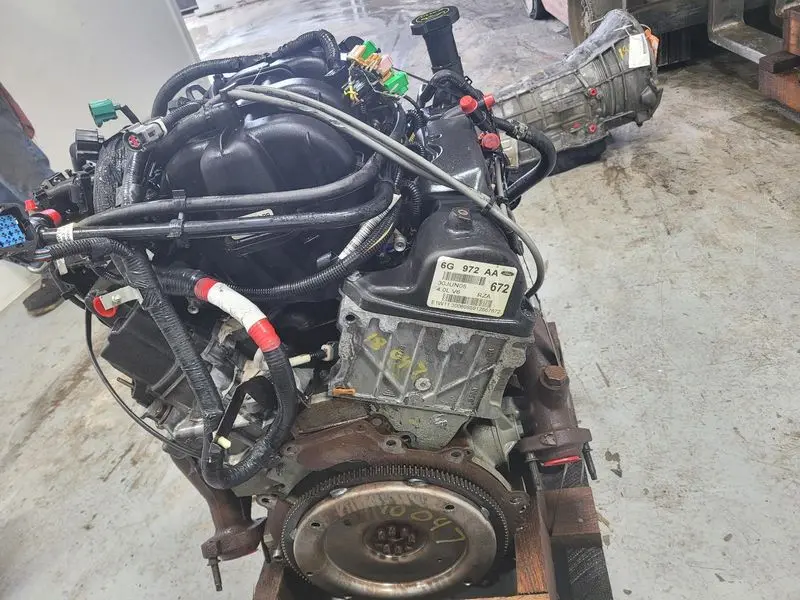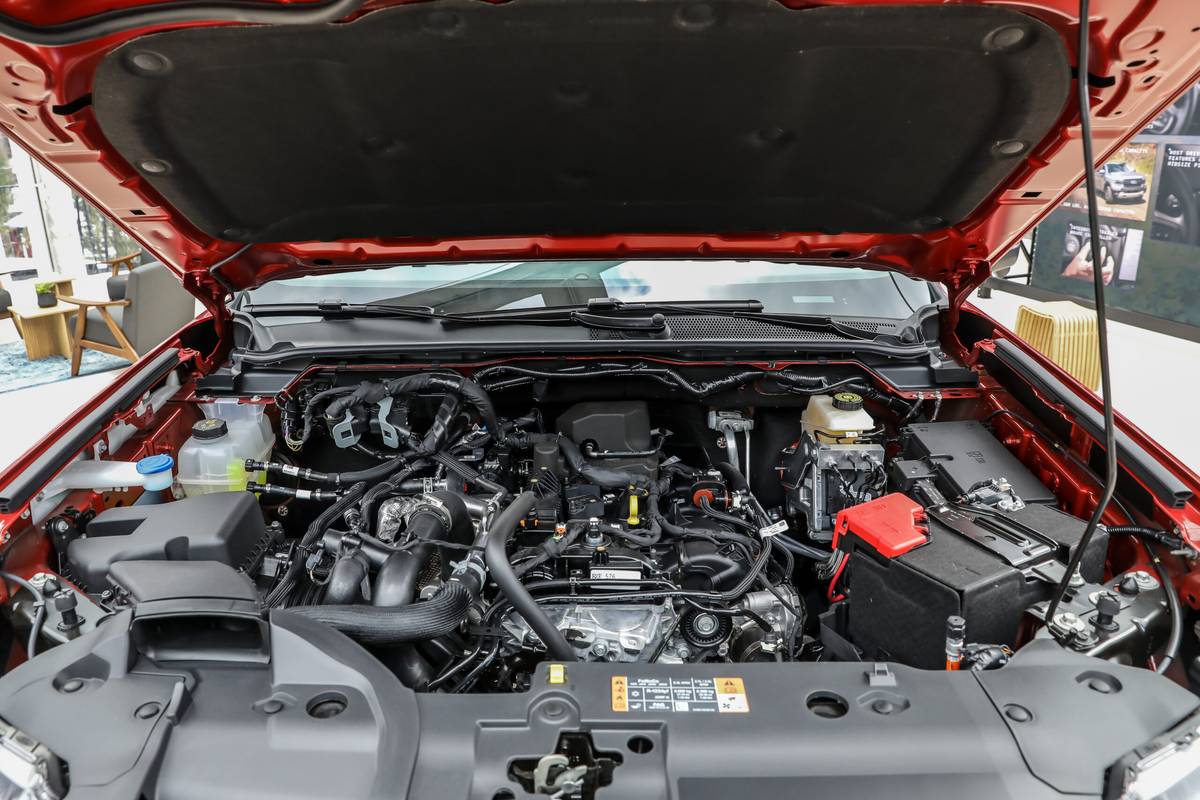Everything You Need to Know About the 2.2 Ford Ranger Engine and Its Performance
Everything You Need to Know About the 2.2 Ford Ranger Engine and Its Performance
Blog Article
Recognizing the Basics of Cars And Truck Engines: Attributes, kinds, and functions

Review of Automobile Engines
A car engine serves as the heart of a lorry, transforming fuel right into mechanical power to propel it forward. This complex system consists of various components that operate in unison to make certain optimal performance and performance. The fundamental operation of a cars and truck engine involves the internal burning process, where gas and air are combined, sparked, and eliminated to develop power.
The engine's layout can dramatically affect its performance, gas efficiency, and exhausts. Trick parts include the cylinder block, pistons, crankshaft, and camshaft, each playing an important role in the engine's total feature. The cylinder block houses the cyndrical tubes where burning takes place, while the pistons convert the explosive power from burning into linear movement. This activity is after that changed into rotational power by the crankshaft, making it possible for the vehicle's wheels to turn.
In enhancement to these components, engines commonly use numerous systems such as gas injection, ignition, and cooling systems to improve efficiency and longevity. Comprehending the fundamental technicians of automobile engines is important for carrying out and diagnosing issues maintenance, eventually adding to the car's reliability and effectiveness with time.

Kinds of Auto Engines
Vehicle engines can be classified right into numerous types based upon their style, fuel type, and functional concepts. 2.2 ford ranger engine. One of the most usual classifications consist of internal combustion engines (ICE), electrical engines, and hybrid engines
Interior burning engines, which can be additional separated right into fuel and diesel engines, run by firing up a fuel-air mixture to generate power. Fuel engines are commonly lighter and smoother, while diesel motor are much more fuel-efficient and offer greater torque.
Electric engines utilize electric energy stored in batteries to power an electrical motor, offering instant torque and no emissions during operation. As modern technology breakthroughs, electric lorries (EVs) are significantly becoming popular for their ecological benefits and reduced running prices.
Hybrid engines combine components of both internal burning and electric engines, enabling versatile source of power and boosted gas performance. They can run in different settings, utilizing either the gas engine, the electric motor, or both concurrently.
Each kind of engine has distinctive advantages and disadvantages, influencing their application in different lorry kinds and market segments, from compact vehicles to durable trucks. Understanding these kinds is necessary for making educated choices regarding lorry choice and efficiency expectations.
Engine Features Described
Comprehending engine functions is vital for understanding just how lorries operate effectively. At the core of any type of inner combustion engine exists the essential process of converting gas into mechanical power.
The ignition occurs next, sparking the mixture and developing a rapid growth of gases. This pressure drives the piston down during the power stroke, which inevitably converts right into the rotational movement of the crankshaft. The exhaust stroke after that expels the invested gases from the chamber, giving way for a new cycle to start.
Along with these main features, engines additionally include systems that manage cooling and lubrication, making Read Full Report sure optimum functional temperatures and reducing friction between relocating parts. This detailed interaction of functions allows the engine to create the power necessary for automobile propulsion while maintaining efficiency and integrity. Understanding these features supplies valuable insight into the intricacies of automotive engineering and boosts the ability to identify and deal with engine-related concerns effectively.
Secret Engine Attributes
Engine style includes a number of vital functions that considerably influence durability, efficiency, and performance. Among the most crucial aspects is the engine arrangement, that includes inline, V-type, and level layouts. Each setup affects the engine's dimension, equilibrium, and power result, consequently influencing general car dynamics.
One more important attribute is the engine displacement, describing the complete quantity of all cylinders. Bigger variations commonly generate even more power however may compromise gas efficiency. Engine materials also play an essential function; lightweight and high-strength products, such as aluminum and magnesium alloys, boost efficiency without including too much weight.
The kind of fuel shot system utilized-- such as straight or multi-port shot-- affects combustion effectiveness and exhausts. Turbocharging and turbo charging are attributes that enhance engine performance by requiring added air into the burning chamber, boosting power result without dramatically enhancing engine size.
Lastly, the visibility of innovative engine administration systems maximizes fuel-air mix and ignition timing, contributing to smoother procedure and far better gas economic situation. Collectively, these features define an engine's capacities, setting the structure for its performance and durability in an affordable vehicle landscape.
Upkeep Tips for Engines
Correct engine upkeep is crucial for making sure ideal efficiency and durability, as overlooking regular treatment can bring about significant problems down the line. To maintain your engine effectively, start with regular oil changes, generally every 3,000 to 7,500 miles, relying on the kind of oil used. Fresh oil lubes engine parts, reducing friction and wear.
Furthermore, keeping an eye Click This Link on coolant degrees is essential to avoid getting too hot. Make certain that the coolant is topped up and is in excellent problem to maintain reliable temperature law. On a regular basis examine and change air and fuel filters, as clogged filters can hinder air flow and fuel distribution, endangering engine performance.
Additionally, take notice of ignition system and ignition systems. Worn or faulty spark plugs can bring about misfiring and minimized performance. Checking the battery terminals and links for corrosion is also crucial, as a weak battery can affect engine starting.

Conclusion
In recap, a detailed understanding of cars and truck engines incorporates different types, features, and vital features that dramatically affect automobile performance. Internal combustion engines, together with electric and hybrid options, demonstrate varied mechanisms for power conversion. 2.2 ford ranger engine. Identifying the important features, such as consumption and exhaust cycles, together with crucial engine attributes like setup and gas injection systems, gears up car proprietors with the knowledge necessary for reliable upkeep and operation, eventually enhancing automobile durability and performance
A vehicle engine offers as the heart of a vehicle, converting gas into mechanical energy check my reference to thrust it onward. The fundamental operation of a vehicle engine entails the internal combustion process, where fuel and air are blended, sparked, and gotten rid of to produce power.
Routinely examine and replace air and gas filters, as clogged filters can hinder air flow and gas distribution, compromising engine effectiveness. - 2.2 ford ranger engine
In summary, a comprehensive understanding of cars and truck engines encompasses numerous types, functions, and key attributes that considerably influence car efficiency. Acknowledging the vital functions, such as consumption and exhaust cycles, alongside essential engine functions like setup and fuel shot systems, equips automobile proprietors with the knowledge necessary for efficient upkeep and operation, eventually enhancing automobile longevity and performance.
Report this page